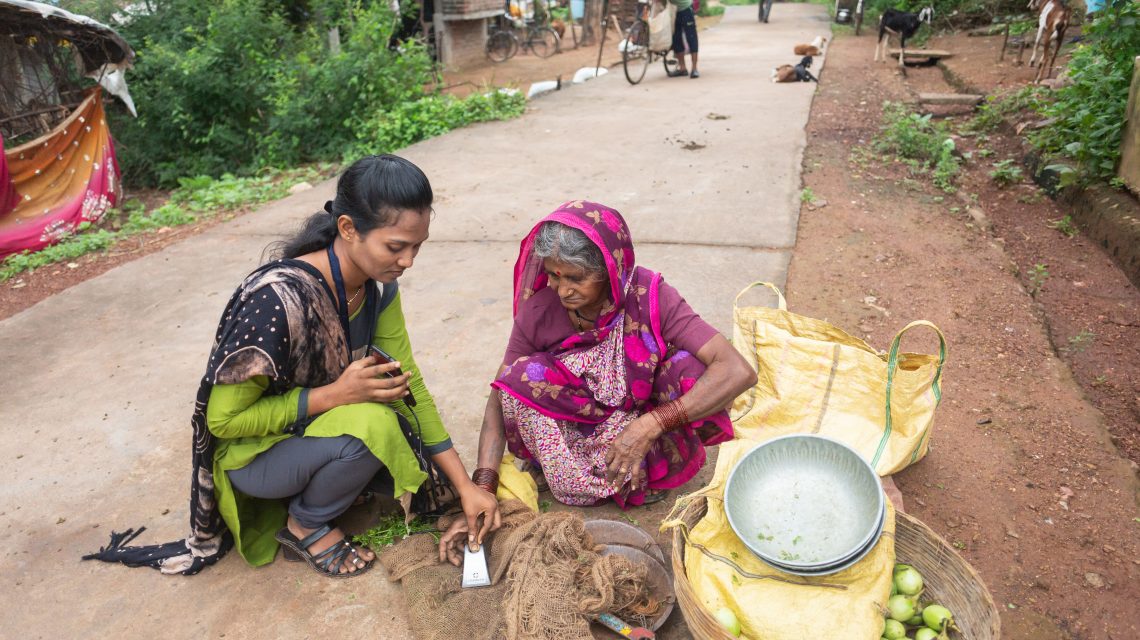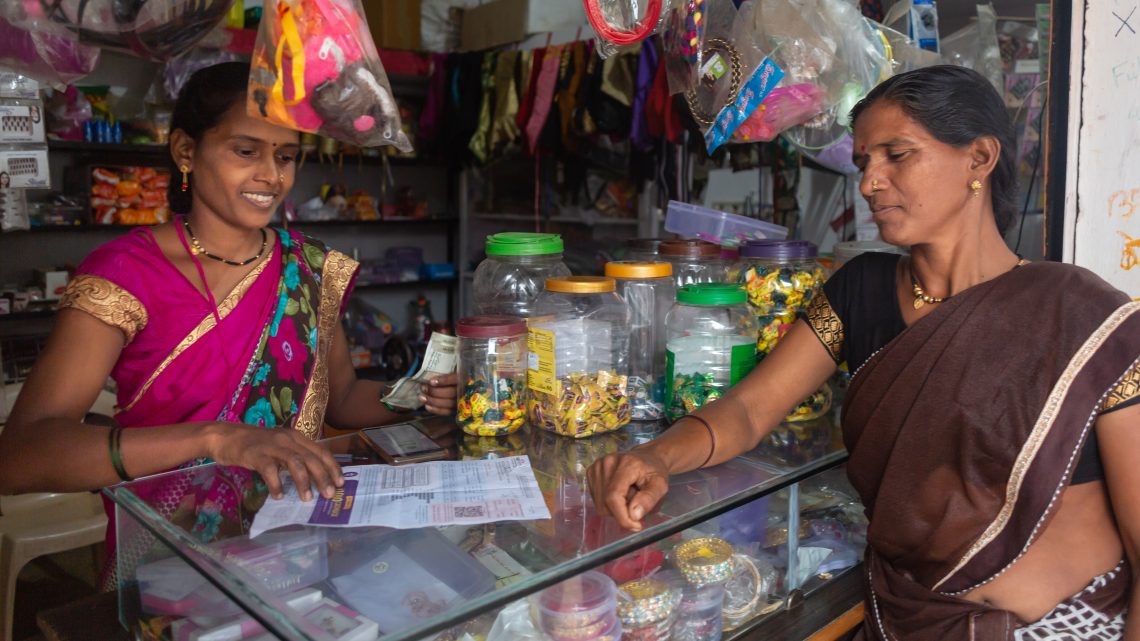Make your 2X MATCHED gift today!
This week only: Every $1 will be matched with $2 to enable women worldwide.
This week only: Every $1 will be matched with $2 to enable women worldwide.

Digitally enabled Community Agent networks are what make the Grameen Foundation Model so uniquely successful. We utilize data and digital technology to create the personalized tools and resources necessary to help the poor to better manage their money and their farms. Then, because rural, poor populations have little or no access or experience with the Internet or digital technology, we bring these digital self-help tools to them through Community Agents. When a respected person from their community shows them how to use the technology, digital screens are no longer threatening, unreliable or hard to trust.
Grameen Foundation partners to develop networks of mostly female agents to bring financial services directly to women clients in rural, underserved areas far from bank branches and ATMs. Why primarily women? Because the gap in access to financial services is largest for women. And women make the majority of the spending decisions that affect the household and children. When women can control money, families are better off.
Our digital tools—which may use interactive voice response, augmented reality, and artificial intelligence—train agents in their local languages and regardless of their level of literacy. Meanwhile, the proliferation of cell phones enables growing numbers of women to access financial services where they are.
In India and the Philippines, we collaborate with partners to recruit, train, equip and manage financial service agents who are transforming access to financial services in their communities. In Africa, we have worked with banks and microfinance institutions to link with mobile network operators (MNOs) to use their network of agents as access points for bank accounts.

Grameen Foundation’s DIVE initiative has trained 100 Community Agents, known in India as Grameen Mittras (which translates to “Friend of the Village”) to act as digital financial service agents. MIttras train their neighbors in financial literacy and connect them to vital services available over their mobile phones and through the government’s digital platforms. Each Mittra will reach an estimated 1,500 households, benefitting up to 250,000 people with first-time or improved access to savings, insurance, utility bill payments, and government programs like pensions.
After little more than one year, the Mittras facilitated transactions worth more than 2.6m Indian Rupees (US $36,590), showing the significant pent-up demand for their services among poor populations in India. In addition, the Mittras are transforming their own lives: learning new skills, generating an additional stream of income, gaining greater financial independence and earning new respect in their community.
As with all of Grameen Foundation’s most successful initiatives, the DIVE program is a collaboration of many partners, from global businesses to government to local organizations.

Grameen Foundation’s Community Agent Network (CAN) embodies a new approach to extending financial inclusion to people in poor, remote areas. It has reached up to one million low-income people in the Philippines, where more than one-third of the country’s 7,107 islands have no banking infrastructure.
CAN combines a mostly female agent network with a digital financial services platform that can connect people with banks, utility companies, government agencies, and other businesses. It has engaged nearly 1,900 agents, 75 percent of whom are women who operate small local shops (sari-sari stores).
In the first two years of operations, CAN agents facilitated more than 4.3 million transactions valued at 1.3 billion Philippine Pesos (US $24.9 million). Sari-sari store operators can now help their customers send payments for services, transfer money to loved ones, deposit money into a digital account and much more.
In creating CAN, we partnered with financial technology partners to create digital “point of service” devices that can connect directly over any mobile network, with any bank, as well as with a growing list of government agencies and other businesses.
Sustainability is built into the program: both the agents and the technology companies get a small fee for each transaction, banks get new customers, and local people are able to bank without spending large sums of money and hours of their day traveling to a distant bank branch.

Uganda has a big shortage of bank branches and ATMs. In 2012, there was less than one financial service access point for every 20,000 people nationally—and fewer still in rural areas. Grameen Foundation has been on the cutting edge of a wave of change, using digital technology to connect underserved communities to formal financial accounts using mobile money.
In 2012, we began work to transform two financial institutions to enable them to reach the rural poor. To do so, we worked with the largest bank in Uganda and a wholly-owned government financial institution, mobile network operators and a technology company.
With our technology partners, we developed a digital platform that enables account holders at partner bank and financial institutions to use their mobile phones to make deposits or withdrawals at any mobile money agent location across Uganda. Suddenly, the need for long and sometimes hazardous trips to the bank was gone. The new service launched in 2015 and enabled fast, flexible, secure, and remote transactions.
While Grameen Foundation’s role has ended, the channels and products we developed live on as a sustainable digital financial solution that truly serves the rural poor. It is attracting new rural customers every day.